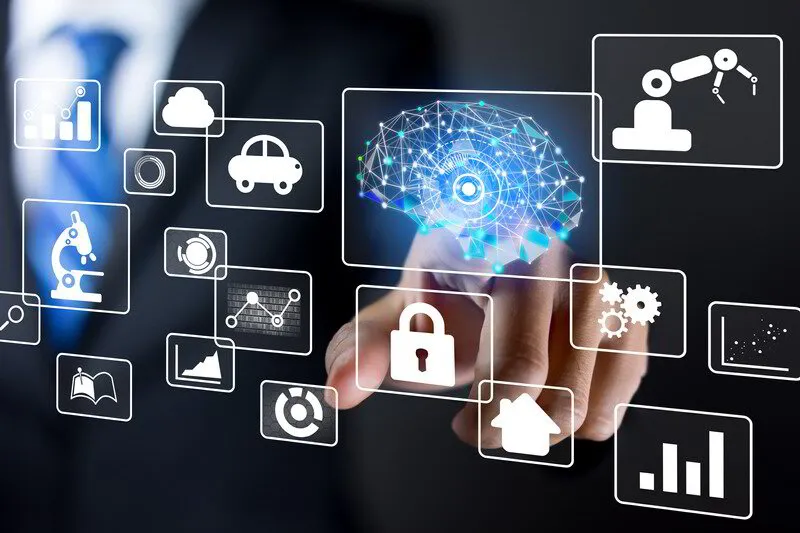Predictive analytics has become essential for businesses looking ahead of their competition. The ability to predict future outcomes can help companies make better decisions about where they should invest their resources and which customers could be profitable down the road.
Predictive analytics can help businesses identify new opportunities, mitigate risks, and improve overall performance. For example, retailers can use predictive analytics to optimize pricing strategies, while manufacturers can use it to predict equipment failure and prevent downtime. It can also be used for inventory management and planning, identifying trends in data, improving business processes, and making faster decisions.
Integrating AI and ML in predictive analytics has significantly enhanced the capabilities of the technology. AI and ML algorithms can process vast amounts of data and identify patterns that would be otherwise impossible to detect. They can also learn and adapt, making predictions more accurate over time.
Understanding Predictive Analytics
Predictive analytics uses data, statistical algorithms, and machine learning techniques to identify the likelihood of future outcomes based on historical data. It involves analyzing data from various sources, such as customer transactions, social media activity, and sensor data, to identify patterns and trends that can inform business decisions.
In business, predictive analytics can identify potential opportunities, such as new market segments or product lines, and potential risks, such as fraud or equipment failure. It can also optimize operations, such as inventory management or marketing campaigns. Many industries are using predictive analytics to gain a competitive edge.
Here are a few examples:
1. Retail
Retail is a huge industry with a lot of moving parts. That's why it can be difficult to figure out how to make the most of your business. Predictive analytics can optimize pricing strategies, predict consumer behavior, and personalize marketing campaigns.
2. Healthcare
Predictive analytics can identify at-risk patients, predict hospital readmissions, and optimize treatment plans. In addition, it can also be used to predict the likelihood of a patient leaving their current health plan or switching to another provider. This information can help providers improve their outreach efforts and ensure patients get the best care possible for them.
3. Manufacturing
Predictive analytics can predict equipment failure, optimize production schedules, and improve supply chain management. It can also help manufacturers optimize their production lines by identifying bottlenecks and potential points of failure before they arise. This allows manufacturers to reduce waste and costs and improve efficiency.
4. Banking and Finance
Predictive analytics can identify fraudulent transactions, predict loan defaults, and optimize investment portfolios. Predicting loan defaults is another way for banking and finance companies to save money. By identifying high-risk borrowers early on, you can ensure that those loans don't go through—and if they do, you know how much risk is involved in them.
5. Telecommunications
Telecommunications is a complex field that's always changing, and the more you anticipate your customer's needs, the better you'll be able to provide them with the services they need. Predictive analytics can predict network traffic patterns and proactively manage network resources to avoid congestion.
6. Marketing and Sales
Predictive analytics can improve lead sales generation by determining which customers will likely buy your products or services. It can also optimize marketing campaigns based on customer behavior patterns and preferences.
Overall, predictive analytics can be applied to any industry that deals with data and is willing to embrace it. The insights generated by predictive analytics can help businesses and organizations make more informed decisions, improve their operations, and, ultimately, drive growth and success.
AI and Machine Learning in Predictive Analytics
Artificial intelligence (AI) and machine learning (ML) are two related technologies increasingly used in various industries, including predictive analytics.
But what exactly are AI and ML, and how do they differ?
Artificial intelligence (AI) is a broad term that refers to the ability of machines to perform tasks that would typically require human intelligence. This can include things like language understanding, problem-solving, and decision-making. On the other hand, machine learning (ML) is a specific subset of AI that involves the ability of machines to learn from data and improve their performance over time.
In predictive analytics, AI and ML are used to analyze large amounts of data and identify patterns that humans may not be able to detect. This can include identifying trends, forecasting future events, and detecting anomalies. Businesses can use AI and ML to make more accurate predictions and better-informed decisions.
There are several advantages to using AI and ML in predictive analytics.
Malogica Systems understand your business needs and requirements and we use our expertise to deliver them. We also offer comprehensive support for our products, including technical support, warranty, and customer service.
Benefits of choosing Malogica Systems as your IT Infrastructure Solutions Provider:
1. Improved Accuracy
One of the main advantages of using AI and ML in predictive analytics is the improvement in accuracy. These technologies enable predictive models to learn from vast amounts of data and make more accurate predictions. They can also identify patterns and trends that humans may not be able to see, resulting in more accurate predictions.
2. Automation
Another advantage of using AI and ML in predictive analytics is automation. Predictive models can be trained and run automatically without human intervention. Predictions can be generated quickly and without errors, resulting in more efficient decision-making.
3. Scalability
AI and ML also enable predictive analytics to be scaled to large datasets. Predictive models can be trained on massive amounts of data, and predictions can be generated for large numbers of customers or clients. This makes it possible to gain insights and make predictions at a large scale, which is helpful for businesses and organizations with large customer bases.
4. Cost-Effective
Using AI and ML in predictive analytics can also be cost-effective. Predictive models can be trained and run on cloud-based platforms, eliminating the need for expensive hardware and software. Additionally, automation and scalability can help reduce labor costs associated with traditional predictive analytics techniques. Furthermore, AI and ML can help businesses identify cost savings opportunities and optimize their operations, ultimately reducing overall costs.
Additionally, tasks such as data pre-processing, feature selection, and model selection can be automated using AI and ML, saving time and resources. And perhaps most importantly, AI and ML can handle complex data and make predictions based on non-linear relationships, which traditional statistical methods may not be able to handle.
1. Supervised learning algorithms
These algorithms are trained on a labeled dataset, where the output variable is already known. Examples of supervised learning algorithms include linear regression, decision trees, and random forests. These algorithms are commonly used for demand forecasting and fraud detection applications.
2. Unsupervised learning algorithms
These algorithms are not trained on a labeled dataset and are used to identify patterns and structures in the data. Examples of unsupervised learning algorithms include k-means clustering and hierarchical clustering. These algorithms are commonly used for anomaly detection and customer segmentation applications.
3. Reinforcement learning algorithms
These algorithms are trained to make decisions based on rules and rewards. These algorithms are commonly used for robotic control and game-playing applications.
In addition to different types of algorithms, AI and machine learning can also be used in various applications in predictive analytics, such as:
- Demand forecasting: Predicting future demand for products or services can help businesses optimize inventory levels and improve sales.
- Fraud detection: Identifying fraudulent activities can help businesses reduce losses and improve security.
- Risk assessment: Assessing a particular event's risk can help businesses make informed decisions and minimize losses.
- Predictive maintenance: Predicting when equipment will need repairs can help businesses reduce downtime and increase efficiency.
However, using AI and machine learning in predictive analytics also has some challenges and limitations, such as: - Data quality and pre-processing: To make accurate predictions, the data used to train the algorithms to need to be clean, accurate, and relevant.
- Complexity: Complex and require specialized skills to implement and maintain.
- Ethics and bias: Perpetuate bias and discrimination if the training data is not diverse or the algorithm is not adequately tested and validated.












